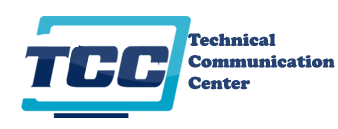Technical Writing
How to Get That Very First Technical Writing Job…
That very first technical writing job is the hardest for most writers and non-writers who are new to the field. Once that threshold is crossed, there’s usually no going back. The rest is usually a series of promotions or lateral and vertical moves from one company or assignment to another. For the freelancing “lone writers,”…
Read MoreTwo Different Meanings of Documentation Plan
(Copyright-free photo courtesy of Štefan Štefančík at Unsplash dot com) © Ugur Akinci There are TWO different varieties of “Documentation Plan”s. The first definition of “Documentation Plan” is a rather narrow one according to which the TCC template was designed: a plan to write a hi-tech user manual, a system administration or installation guide. This…
Read MoreShortcomings of Line Graphs (or Line Charts)
Line graph or line chart is one of the most frequently used types of graphic displays in technical communication. Here is an example: Consumption of Fiber by U.S. Apparel Industry, 1994-2001 (Millions of pounds) (Source: U.S. Department of Commerce, Bureau of Industry and Security) The most important aspect of a line graph is its use of “categories”…
Read MoreViolating Document Specs May Cost CA County $548 Million
© Ugur Akinci I forgot the number of times I’ve emphasized the importance of clarity and accuracy in technical documentation in this blog and the dire consequences that can arise from such errors. To my online course students that’s something I make clear right away: a technical document must be correct and accurate above anything…
Read MoreHow to Decide How Granular Your Technical Writing Should Be
How granular and detailed your technical writing should be? This common problem is sometimes also referred to as the “granularity” issue. For example, consider the following alternative description of the same procedure: DESCRIPTION 1 (not so granular): Open First.html in IE9. DESCRIPTION 2 (very granular): In your browser’s URL window, enter the following URL and…
Read More2 Technical Writing Topics: Future Prospects and a Marvelous Book
© Ugur Akinci As I was trolling through the Internet I was surprised to come across these income figures for technical writers. This confirms my general observation that, recession or not, tech writers continue to make excellent income with two conditions: 1) They should be working in the hi-tech industry. And 2) They should have…
Read MoreHow to Structure a Software TOC — by GUI Components or Functions & Processes?
© Ugur Akinci How would you organize a Table of Contents (TOC) when documenting software? What’s the best way to do that? A common beginner’s mistake is to compile a TOC by such GUI (Graphic User Interface) components as tabs and menus. For example, let’s say you are documenting how to use MS Word. One…
Read MoreWhat is “Inverted Pyramid” Style of Writing?
“Inverted Pyramid” Style of Writing is writing what is most important first and what is the least important the last. The traditional style of writing takes its time by first establishing the “base” of knowledge, similar to the way a regular pyramid would have its base at the bottom of the structure. All the other…
Read MoreThe Most Basic and Indispensable Parts of a User Manual
How do you explain the most important parts of a technical document, say a “User Manual,” to a complete beginner? I actually had that challenge when a student who has registered to one of my online courses admitted that he did not know where to quite begin writing his manual and what to include in…
Read MoreHow to Use Right Chevron (>) Correctly in Procedural Writing
RIGHT CHEVRON (>) is used in technical documents to denote a SERIES of SEQUENTIAL ACTIONS. If you’re writing a software or hardware manual, the changes are those actions would be “GUI actions,” that is, describing what the user should do on the screen with a mouse, keyboard shortcut, or a tablet pen. If you first…
Read More